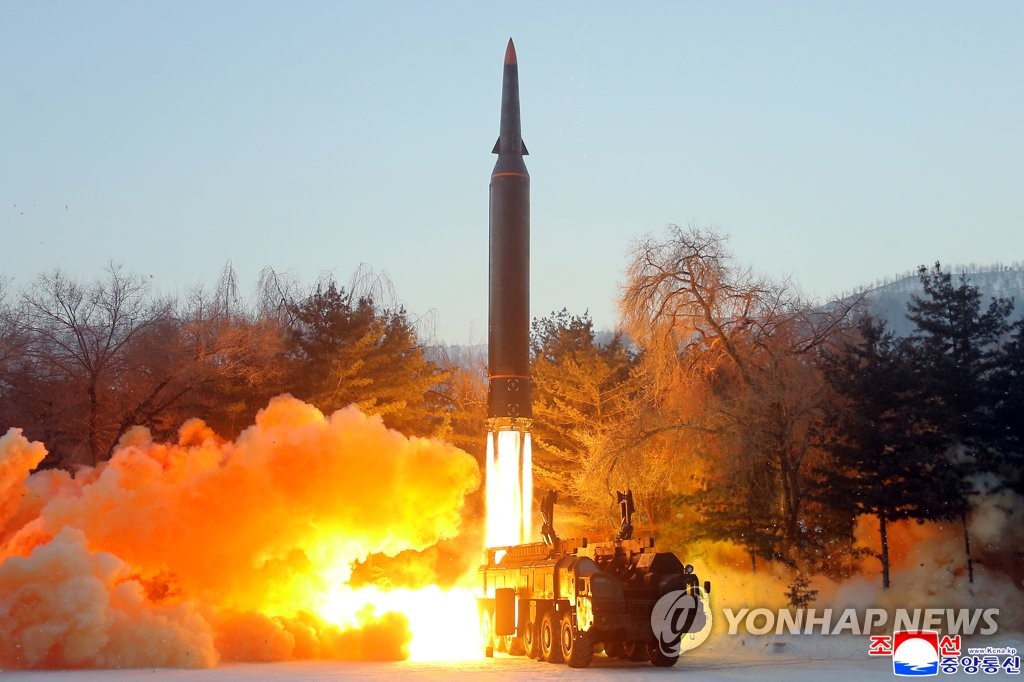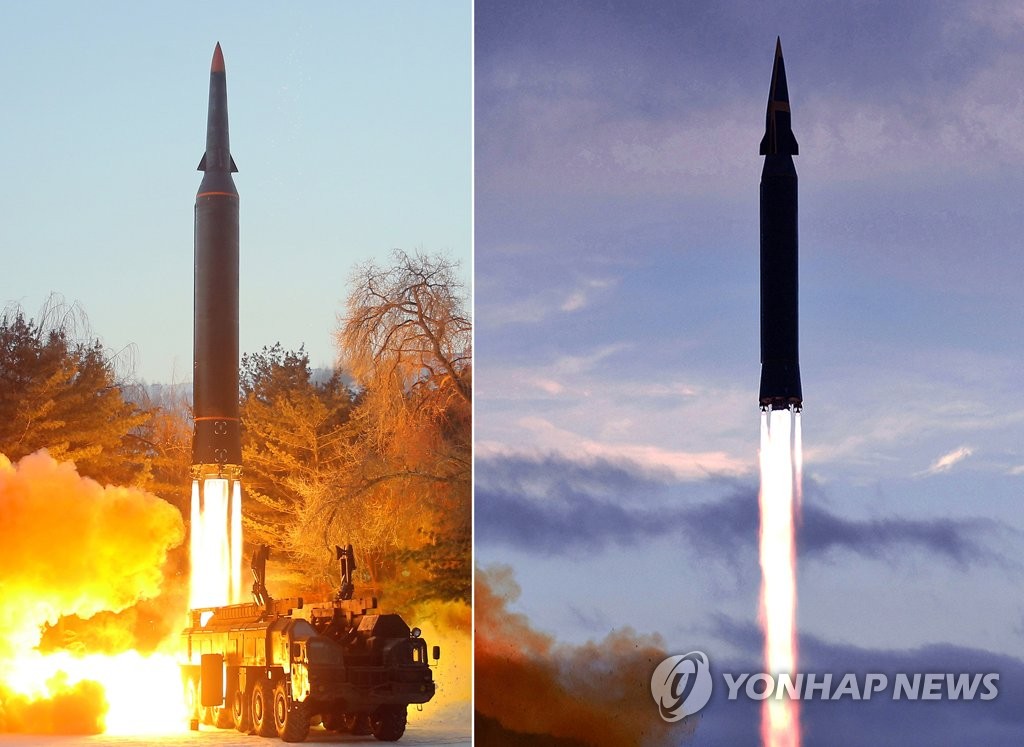Hypersonic Missile Test Starts DPRK New Year with a Bang

View of a TEL and hypersonic missile in an undisclosed part of Chagang Province on 5 January 2022 (Photo: KCNA-Yonhap).
The Workers’ Party of Korea [WPK] Munitions Industry Department [MID] tested a hypersonic missile on the morning of 5 January (Wednesday). According to DPRK state media, the “successive test successes in the sector of hypersonic missiles have strategic significance in accelerating the task of modernizing the national strategic force by the 8th Party Congress and help complete the most important core task, out of the five priority tasks for the strategic arms sector in the Five-Year Plan.”
The missile was launched from Chagang Province into the East Sea at around 8:10 KST. The National Defense Academy “reaffirmed the missile’s flight control and stability of the missile in the active flight stage and evaluated the performance capability of the new lateral maneuver technique applied to the separated hypersonic gliding.” The missile, according to KCNA, “made a 120 km (77 miles) lateral movement in the flight distance of the hypersonic gliding warhead from the initial launch azimuth to the target azimuth and precisely hit a set target of 700 km (435 miles) away.”
Also, the test verified the “reliability of fuel ampoule system under the winter weather conditions.” Yonhap tells us that “ampouleization refers to a method of putting liquid fuel in a container and inserting it every time it is fired….unlike the existing injection-type liquid fuel supply method, the injection time can be shortened with the advantage of being able to fire quickly and comparable to solid fuel.”

Contrasting views of the 5 January 2022 (left) and 28 September 2021 hypersonic missile tests (Photos: KCNA/Yonhap File photos).
The “test launch clearly demonstrated the control and stability of the hypersonic gliding warhead which combined the multi-stage gliding jump flight and the strong lateral movement.” Based on photos released of the war head, ROK missile watchers have questioned whether this latest missile test involved the Hwasong-8, which the DPRK tested in September 2021, or a another missile system. This would mean “two types of hypesonic missiles” have been developed.
According to Yonhap,”the hypersonic missile launched this time has the same shape as the new MARV (maneuverable re-entry vehicle) that North Korea unveiled at the Defense Development Exhibition last October. The MARV shape can disrupt missile defense systems by changing the direction at the last stage of flight by using wings mounted on the upper, lower, left and right sides of the body. Even the MARV-shaped missile that North Korea has unveiled has wings that enable movement up, down, left and right, which is feature found in other MARVs such as the US Pershing and China’s DF-15.”
Shin Jong-woo of the Korea Defense and Security Forum said that “the hypersonic missile launched this time is a glider type of the Hwasong-8 type and another type hypersonic missile with triangular pyramid wings”
In any event, the WPK Central Committee “expressed great satisfaction with the test and launch results and sent its enthusiastic congratulations to the relevant sector of defense science research.”
Trucking up to Chagang Province for the missile test were senior officials “concerned of the Department of Munitions Industry” and other DPRK defense industry personnel.
Notably, neither the WPK Secretary for Military and Logistics Pak Jong Chon (Pak Cho’ng-chon) nor MID Director Yu Jin (Yu-chin) nor any first-tier Korean People’s Army [KPA] were reported to have attended the New Year’s missile test. This represents the continuation of making DPRK missile and weapons systems tests into normal events. First, Kim Jong Un (Kim Cho’ng-u’n) stopped going to defense industry test events. With this latest test, at least, the Central Committee’s and KPA high command’s top officials did not attend. These people (individually or as a group) most likely monitored the test in real time. Their absence from the event itself, or not publicizing their presence if they did attend, is part of a process whereby DPRK missile tests are intended to seem like normal and eventually routine things that don’t require the special attention of The Center.